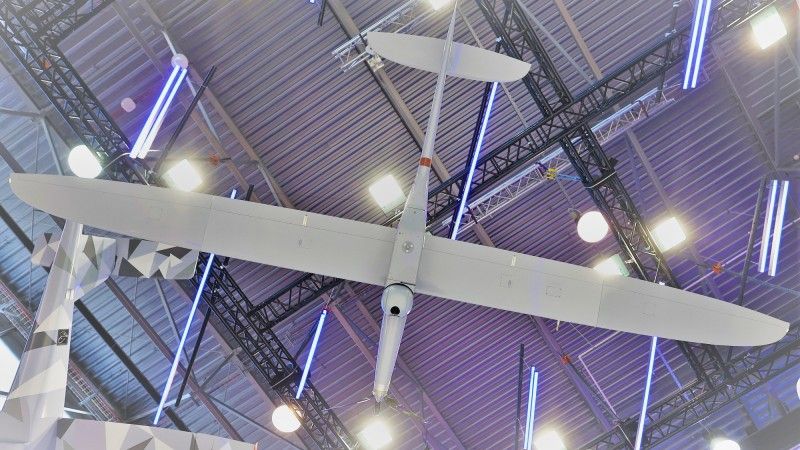Polish Military Will Receive Thousands of Drones Combat Proven in Ukraine

The Armament Agency has signed a framework agreement with the WB Group for the supply of nearly 1,700 FlyEye unmanned aerial systems. The contract is to be completed by 2035. It includes deliveries of the latest versions of the most famous Polish FlyEye system. The equipment is tested in combat conditions and is constantly being developed.
FlyEye is an unmanned aerial system delivered to the Polish Armed Forces since 2010. It is a motor glider with an electric drive, developed and manufactured entirely in Poland, equipped with a task module with a head containing a daytime and thermal imaging camera. Each FlyEye set includes four unmanned aerial vehicles and single- and multi-sensor seeker heads.
FlyEye is a system proven in the most difficult combat conditions. It has been used since 2015 during a high-intensity conflict in which electronic warfare measures are used on a large scale. The Polish solution can be constantly modified and improved, because all intellectual rights to the system belong to a Polish entity.
Representatives of the WB Group emphasize that the FlyEye construction did not use any Eastern or Western technologies that could be subject to restrictions. It is a system designed by Polish engineers and manufactured entirely in Poland.
As part of the contract signed in Kielce, the Polish Armed Forces intend to purchase over four hundred FlyEye sets in the latest version produced and tested at the time of signing the execution contract (which means more than 1600 aircraft). The contract also includes documentation, delivery of logistics and training packages and staff training, as well as technical support and advice after the completion of deliveries of unmanned systems.

The latest version of the FlyEye system debuts at MSPO. The unmanned aerial vehicle can perform missions in an environment without the support of satellite navigation systems, but also in the conditions of giving a false signal (so-called spoofing).
This is possible thanks to a combination of proprietary algorithms used by the autopilot to determine the position of the unmanned aerial vehicle, a radio link proven in combat conditions, the use of inertial navigation and cooperation with artificial intelligence mechanisms. The system is protected against taking control of the unmanned aerial vehicle by an unauthorized operator.
The unmanned aerial vehicle is equipped with a proprietary Mode S system transponder developed by the WB Group. The achievement is to minimize the device so that it can be built into a mini-class system. As a standard, UAVs of these dimensions are not equipped with transponders. Thanks to the use of Mode S, the unmanned aerial vehicle has the ability to perform operations in controlled airspace - it can be shared with other military and civil aircraft.
FlyEye is fully integrated with the TOPAZ command and control system, the PERAD radio and the U-GATE personal command and surveillance system. This ensures all functionalities and allows the use of the aircraft as a retranslator, which significantly increases the range of low-power radios. The unmanned aerial vehicle is also integrated with ATAK. Thanks to this, ordinary smartphones can be used as graphic terminals, which affects the building of operational awareness at the level of subdivisions.
FlyEye is an unmanned aerial vehicle that can take off from one's hand. It is praised by operators for its lack of heavy logistics. To complete a full-distance mission, all you need is equipment packed in three backpacks. The FlyEye platform is adapted to the installation of various sensors. Image stabilization in the latest version takes place directly on board the unmanned aerial vehicle. Thanks to this, the image is constantly stable and smooth. The set includes ICBC (SIŁA, pl: FORCE) - Intelligent Car Battery Charger.



